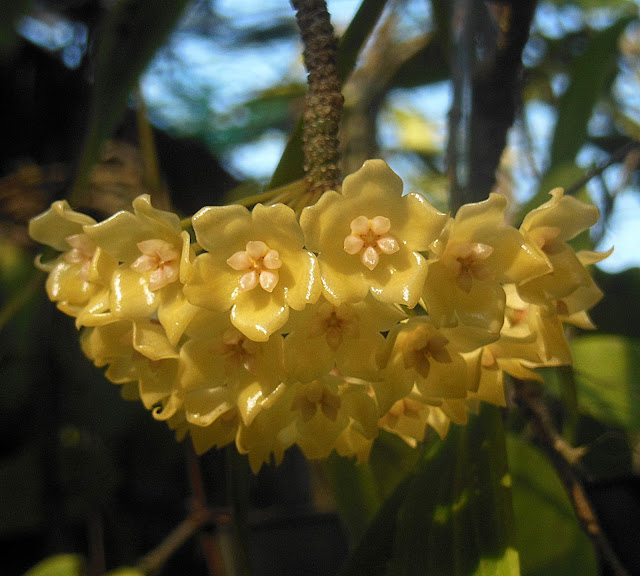A rare and still nameless Hoya
As it currently stands, the Philippines is acknowledged as having the most number of known Hoya species, with in excess of 100 species, although with the number of new species descriptions with dubious methodology in the past years, the actual number may be lower. Nevertheless, entities that are certainly new to science are still being discovered with regularity. Take this plant as an example. At first sight, it can be mistaken for H. blashernaezii, with its narrow, lanceolate leaves and campanulate yellow flowers. But the corona lobes are markedly different, with H. blashernaezii's being longer and more drawn out, and noticeably more appressed to the corollas. In this plant, the coronas are more blocky and diagonally oriented.
Here is what the flowers appear when still in the bud stage. Already quite attractive even with the flowers still closed, don't you think?
These flowers open at night like in most hoyas, with a very weak, almost imperceptible, delicate scent. The flowers are short-lived, like in H. blashernaezii and its close relative H. siariae, but this plant blooms several times a year.
I have this plant in cultivation for seven years now and a few years ago, there was an attempt to describe this plant as new, but my supposed co-authors were caught up with other matters. I might describe this plant as new myself, but with my current disinterest in describing new species, I suggest that you do not hold your breath.
A curious attribute of the flowers is that the flower coloration changes depending on one's position and the angle of light that hits the flowers. The photo below depicts the blooms in their 'true' colors, so to speak.
As one would expect, this lovely, still nameless species is practically still unknown in cultivation. I have another plant of this, a rooted cutting, but am currently not interested in introducing this plant into general cultivation. Maybe someday.







Comments
Post a Comment